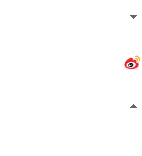Scheduling a task in Java within a CompletableFuture
When we want to do something later in our Java code, we often turn to the ScheduledExecutorService. This class has a method called schedule(), and we can pass it some code to be run later like this:
Executors.newScheduledThreadPool(4);
executor.schedule(
() -> {System.out.println("..later");},
1,
TimeUnit.SECONDS
);
System.out.println("do
 ");
");// (Don't forget to shut down the executor later
 )
)The above code prints “do…” and then one second later it prints “…later”.
We can even write code that does some work and returns a result in a similar way:
ScheduledFuture future = executor.schedule(
() -> 10 + 25, 1, TimeUnit.SECONDS);
System.out.println("answer=" + future.get())
The above code prints “answer=35”. When we call get() it blocks waiting for the scheduler to run the task and mark the ScheduledFuture as complete, and then returns the answer to the sum (10 + 25) when it is ready.
This is all very well, but you may note that the Future returned from schedule() is a ScheduledFuture, and a ScheduledFuture is not a CompletableFuture.
Why do you care? Well, you might care if you want to do something after the scheduled task is completed. Of course, you can call get(), and block, and then do something, but if you want to react asynchronously without blocking, this won’t work.
The normal way to run some code after a Future has completed is to call one of the “then*” or “when*” methods on the Future, but these methods are only available on CompletableFuture, not ScheduledFuture.
Never fear, we have figured this out for you. We present a small wrapper for schedule that transforms your ScheduledFuture into a CompletableFuture. Here’s how to use it:
ScheduledCompletable.schedule(
executor,
() -> 10 + 25,
1,
TimeUnit.SECONDS
);
future.thenAccept(
answer -> {System.out.println(answer);}
);
System.out.println("Answer coming
 ")
")
The above code prints “Answer coming…” and then “35”, so we can see that we don’t block the main thread waiting for the answer to come back.
So far, we have scheduled a synchronous task to run in the background after a delay, and wrapped its result in a CompletableFuture to allow us to chain more tasks after it.
In fact, what we often want to do is schedule a delayed task that is itself asynchronous, and already returns a CompletableFuture. In this case it feels particularly natural to get the result back as a CompletableFuture, but with the current ScheduledExecutorService interface we can’t easily do it.
It’s OK, we’ve figured that out too:
CompletableFuture.completedFuture(10 + 25);
CompletableFuture<Integer> future =
ScheduledCompletable.scheduleAsync(
executor, asyncTask, 1, TimeUnit.SECONDS);
future.thenAccept(
answer -> {System.out.println(answer);}
);
System.out.println("Answer coming
 ")
")
The above code prints “Answer coming…” and then “35”, so we can see that our existing asynchronous task was scheduled in the background, and we didn’t have to block the main thread waiting for it. Also, under the hood, we are not blocking the ScheduledExecutorService‘s thread (from its pool) while the async task is running – that task just runs in whatever thread it was assigned when it was created. (Note: in our example we don’t really run an async task at all, but just immediately return a completed Future, but this does work for real async tasks.)
I know you’re wondering how we achieved all this. First, here’s how we run a simple blocking task in the background and wrap it in a CompletableFuture:
ScheduledExecutorService executor,
Supplier<T> command,
long delay,
TimeUnit unit
) {
CompletableFuture<T> completableFuture = new CompletableFuture<>();
executor.schedule(
(() -> {
try {
return completableFuture.complete(command.get());
} catch (Throwable t) {
return completableFuture.completeExceptionally(t);
}
}),
delay,
unit
);
return completableFuture;
}
And here’s how we delay execution of an async task but still return its result in a CompletableFuture:
ScheduledExecutorService executor,
Supplier<CompletableFuture<T>> command,
long delay,
TimeUnit unit
) {
CompletableFuture<T> completableFuture = new CompletableFuture<>();
executor.schedule(
(() -> {
command.get().thenAccept(
t -> {completableFuture.complete(t);}
)
.exceptionally(
t -> {completableFuture.completeExceptionally(t);return null;}
);
}),
delay,
unit
);
return completableFuture;
}
Note that this should all work to run methods like exceptionally(), thenAccept(), whenComplete() etc.
Feedback and improvements welcome!
https://www.artificialworlds.net/blog/2019/04/05/scheduling-a-task-in-java-within-a-completablefuture/
posted on 2020-08-24 09:06 paulwong 閱讀(403) 評論(0) 編輯 收藏 所屬分類: J2SE 、多線程


